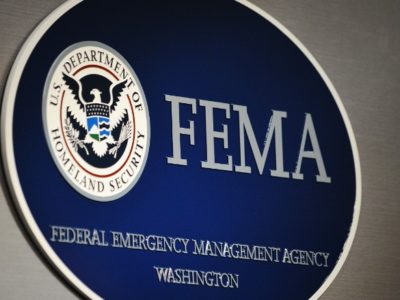Environmental Justice, Truck Pollution, and the Biden EPA
How will EPA integrate EJ into its rule making? The answer remains murky.
EPA recently released a notice of proposed rulemaking for pollution from new heavy-duty vehicles. I was interested to see how environmental justice figured into the analysis, looking for clues about how the Biden Administration plans to make EJ part of decision making. What I found wasn’t very enlightening. Perhaps they’re still trying to come up with the answer themselves, as shown by their request for further comment about the environmental justice implications of the rule.
What’s in the notice of proposed rule making leaves a lot of open questions. I did find two discussions of environmental justice, on pp. 133-142 and pp. 755-756. (The notice is 1374 pages long. So there may be something else tucked in there that I didn’t see.) The discussion makes it clear that minority and low-income communities are disproportionately impacted by pollution from heavy trucks. What isn’t clear, however, is how that will enter into EPA’s standard-setting decision.
At the same time that it issued the proposed rule, EPA also issued an “announcement” on environmental justice and transportation. It’s a brief document that talks about EPA’s overall strategy in addressing regulation. It doesn’t, however, add anything of note about this particular rule-making. (See p. 2 for the brief discussion.)
I also looked at the Regulatory Impact Analysis, a separate document that accompanies proposed rules. It’s a svelte 436 pages, with an additional 45 pages of references. The RIA contains more detail about the impacts of heavy truck pollution on disadvantaged communities (pp. 305-312), but nowhere explains how that might be relevant to the analysis.
However, it seems to me that environmental justice may actually be implicit in the analysis. The reason is buried in the formula used to calculate health impacts. The report gives the following information about how they quantified health impacts (p. 385):
We estimate counts of PM2.5-related total deaths (yij) during each year i (i=1,…,I where I is the total number of years analyzed) among adults aged 30 and older (a) in each county in the contiguous U.S. j (j=1,…,J where J is the total number of counties) as
yij= Σa yija
yija = moija ×× Pija, Eq[1]
where moija is the baseline all-cause mortality rate for adults aged a=30-99 in county j in year i stratified in 10-year age groups, β is the risk coefficient for all-cause mortality for adults associated with annual average PM2.5 exposure, Cij is the annual mean PM2.5 concentration in county j in year i, and Pija is the number of county adult residents aged a=30-99 in county j in year i stratified into 5-year age groups.
I realize that’s a fairly indigestible paragraph, but I want to emphasis one key point: the role of the term moija , which represents mortality in a county by age in a given year. The risk factor for PM2.5 acts as a multiplier of this base rate. In other words, the assumption is that if a particular age group has a high mortality rate in a given county, that mortality disparity gets amplified by exposure to PM2.5. .
Here’s the reason I think this formula is relevant to environmental justice. The death rate by year in a given county is, as the report reveals elsewhere, a function of demographics, with lower life expectancy and therefore a higher death rate among low income and minority residents. That means that mojia in those counties in those counties will be higher to begin with and will be then multiplied by the risk factor for PM2.5.
That seems to mean that high mortality counties, which will tend to have larger EJ populations, will show up as having high impacts. On top of that, as the proposal says earlier, the exposure factor [(eβ∙∆Cij-1)] for that county in each year will also be higher in EJ communities. I’m hedging a little bit about the factor because I’m definitely not an expert in health economics, and it’s possible that I’m missing something here. But it does appear that there’s an EJ effect because of the lower life expectancy and higher exposure levels in disadvantaged communities, which are picked up by county-by-county parameters.
It would really be nice if this were explained a little more clearly, assuming that I’m actually right about this. In any event, this is a pretty subtle and indirect way of taking into account inequality in our society. And if I’m wrong, then I don’t see anywhere else that the RIA or the proposed rule addresses how inequality might impact the decision about what standard to set. Hopefully, with the benefit of public comments bearing on environmental justice, the discussion in the final rule will be more illuminating.
Reader Comments
One Reply to “Environmental Justice, Truck Pollution, and the Biden EPA”
Comments are closed.







Is it possible that this is an over-worry? If low-income communities are more heavily impacted by pollution from trucks, then wouldn’t cleaner trucks then disproportionately benefit them? (And I trust, no one would mind …)
Unless the cleaner trucks are so expensive that they only get driven in chi-chi areas? That seems not too likely though. Don’t trucks go all over? Of course there could be job losses. But then again, perhaps the truck drivers would be exposed to less gunk themselves, too.
What I really want to know is, how come we can go to the moon, but we can’t retrofit anything?